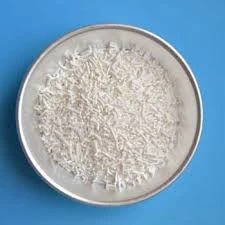
Exploring Alternatives to E223 Preservative for Food Safety and Preservation
Understanding E223 Preservative Benefits and Concerns
E223, commonly known as sodium metabisulfite, is a food preservative widely used in the food industry for its antioxidant properties and ability to inhibit microbial growth. Its chemical formula, Na2S2O5, allows it to act effectively against spoilage caused by bacteria and fungi, making it a popular choice in various food products including dried fruits, wine, and certain seafood. However, while E223 offers several advantages, it also raises health and safety concerns that merit attention.
The Role of E223 in Food Preservation
One of the primary functions of E223 is as a preservative. It is particularly effective in preventing enzymatic browning in fruits and vegetables, helping to maintain their color and freshness. For instance, when dried fruits are exposed to oxygen, they often turn brown due to oxidation. By applying sodium metabisulfite, producers can keep their products visually appealing and marketable.
Additionally, in winemaking, E223 acts as a crucial agent in the preservation and stabilization of wine. It helps to prevent spoilage by inhibiting the growth of wild yeasts and bacteria that could spoil the fermentation process. As a result, many wineries rely on sodium metabisulfite to ensure a consistent and high-quality product.
Health Considerations
Despite its beneficial roles, there are valid concerns regarding the consumption of E223. One of the most significant issues is its potential to cause allergic reactions in sensitive individuals. Some people may experience respiratory problems, headaches, or skin irritations after consuming products containing sodium metabisulfite. Asthmatics, in particular, may be at higher risk because sulfites can trigger asthma attacks in some cases.
e223 preservative

Moreover, excessive consumption of sulfites has raised questions about their long-term impact on health. While regulatory bodies, including the European Food Safety Authority (EFSA) and the U.S. Food and Drug Administration (FDA), have established safe consumption levels for E223, there are ongoing debates regarding the effects of chronic exposure. These discussions underline the importance of labeling food products accurately so that consumers can make informed choices about their dietary intake.
Regulatory Landscape
Due to its potential health risks, the use of sodium metabisulfite is regulated in many countries. In the European Union, for instance, products containing E223 must have clear labeling, notifying consumers about the presence of sulfites, especially if they exceed certain concentrations. Similarly, in the United States, the FDA mandates that food products containing more than 10 parts per million of sulfites must declare their presence on ingredient labels.
These regulations aim to protect consumers, especially those with known sensitivities, while still allowing the food industry to benefit from the preservative's effectiveness in preventing spoilage. In light of consumer awareness regarding food safety, companies are increasingly opting for natural preservatives, which are perceived as healthier alternatives to synthetic options like E223.
Conclusion
E223, or sodium metabisulfite, plays a significant role in food preservation, offering several benefits including enhanced shelf life and maintained color in food products. However, its use is not without controversy, given the potential for allergic reactions and other health concerns. As consumers become more health-conscious and regulations continue to evolve, the food industry must navigate the delicate balance between utilizing effective preservatives and ensuring the well-being of its customers. Awareness, education, and transparency in labeling are essential to empower consumers to make informed choices about the foods they consume, ultimately guiding the future of food preservation techniques.
In summary, while E223 remains a valuable tool in food preservation, it is crucial to continue the dialogue about its safety and to encourage the exploration of alternative practices that align with consumer health and safety.
-
Pure Sodium Dichloroisocyanurate Dihydrate | Powerful DisinfectantNewsAug.29,2025
-
Industrial Chemicals: Quality & Purity for Every IndustryNewsAug.28,2025
-
Nitrile Rubber Honoring Strict Production StandardsNewsAug.22,2025
-
Aspartame Ingredients Honoring Food Safety ValuesNewsAug.22,2025
-
Fertilizer for Balanced Plant NutritionNewsAug.22,2025
-
Cyanide Gold Processing with High Purity AdditivesNewsAug.22,2025
-
Formic Acid in Textile Dyeing ApplicationsNewsAug.22,2025
Hebei Tenger Chemical Technology Co., Ltd. focuses on the chemical industry and is committed to the export service of chemical raw materials.
-

view more DiethanolisopropanolamineIn the ever-growing field of chemical solutions, diethanolisopropanolamine (DEIPA) stands out as a versatile and important compound. Due to its unique chemical structure and properties, DEIPA is of interest to various industries including construction, personal care, and agriculture. -

view more TriisopropanolamineTriisopropanolamine (TIPA) alkanol amine substance, is a kind of alcohol amine compound with amino and alcohol hydroxyl, and because of its molecules contains both amino and hydroxyl. -

view more Tetramethyl Thiuram DisulfideTetramethyl thiuram disulfide, also known as TMTD, is a white to light-yellow powder with a distinct sulfur-like odor. It is soluble in organic solvents such as benzene, acetone, and ethyl acetate, making it highly versatile for use in different formulations. TMTD is known for its excellent vulcanization acceleration properties, which makes it a key ingredient in the production of rubber products. Additionally, it acts as an effective fungicide and bactericide, making it valuable in agricultural applications. Its high purity and stability ensure consistent performance, making it a preferred choice for manufacturers across various industries.





